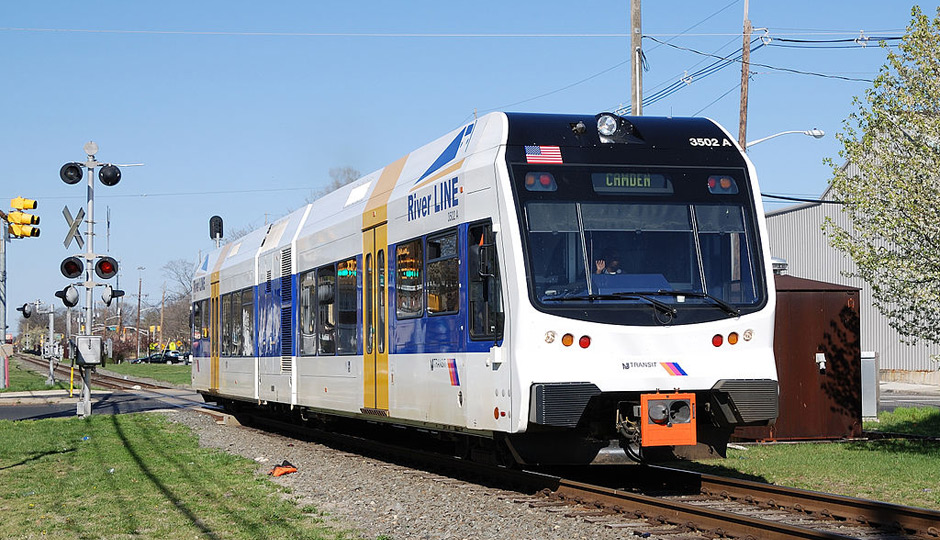Bright Idea for SEPTA: Regional Rail Lite

New Jersey Riverline car. Photo | Sanoyes
This week’s big news out of 1234 Market Street is that, as part of its big capital project catch-up list, SEPTA may purchase bilevel electric multiple-unit (EMU) railcars to increase capacity on its Regional Rail lines.
They’re definitely needed, as Regional Rail ridership has been climbing steadily over the last several years. It seems that not even heavy snow has put a real dent in its growth: In December, according to figures from SEPTA, Regional Rail ridership rose from year-ago levels while the two snowstorms that month caused transit ridership to fall off slightly.
So there’s no question that more capacity is needed on Regional Rail, and bilevel railcars are a good way to provide it at peak commute times. But what about the rest of the day?
Thanks to a proposed rule change, it is now possible to contemplate a solution that would add off-peak capacity while achieving one of the goals recommended in my earlier post on ways to get more riders on board public transit in Philly.
The Philadelphia City Planning Commission likes this idea so much that it touted it on its Philadelphia Planeto blog last week. Boston is seriously considering this idea, and we should too.
It’s this: Run service on the Regional Rail lines using lightweight diesel multiple-unit (DMU) railcars.
Service of this type already operates in our region: New Jersey Transit’s River Line, which connects Trenton and Camden via a freight railroad line. New Jersey is currently in the process of extending this service south from Camden to Glassboro.
It’s proved more popular than originally forecast, but it cannot reach its full potential because of Federal Railroad Administration (FRA) safety rules. Because the River Line diesels do not meet FRA crashworthiness standards for mainline railroad equipment, they must be kept separate from those heavier railcars. The way the rule works on lines that both types of cars use is that the two types of equipment cannot use the line at the same time. That’s why you can’t travel between Pennsauken and Bordentown on the River Line after about 10:30 p.m.
The Obama administration has pledged to get rid of this “temporal separation” requirement this year. That opens up a world of possibilities for expanding Regional Rail service, and the lightweight railcars are the key to that world.
Boston magazine reports that as part of its 10-year long-range capital plan, the Massachusetts Department of Transportation envisions a new network of commuter rail lines using existing rail corridors with more closely spaced stations. These new lines would be serviced by those diesel (DMU) cars.
Philadelphia’s Regional Rail network used to have many more — and more closely spaced — stations than it does now, and it used to extend further into the city’s hinterlands and operate on more corridors. Those corridors were served by diesel rail cars operating out of the Reading Terminal. When the Commuter Tunnel and its Market East Station replaced the terminal in 1984, SEPTA eliminated all non-electrified service because diesel-powered trains could not run in the tunnel.
That’s still true today. But with recent improvements to facilities just outside the tunnel, it is possible to run diesel trains to stations equipped to handle transfers well. On the Reading side, the rebuilt Wayne Junction makes an ideal transfer point. On the Pennsylvania side, 30th Street Station’s suburban platforms could be re-extended to handle the extra trains.
Service of this type could be operated more frequently as well, and it could be done with smaller crews than are required for the mainline railroad trains.
More frequent off-peak Regional Rail service would not only be good for Center City, it would unlock the potential for transit-oriented development and redevelopment of our region’s suburban town centers as well. Given all the upside potential, SEPTA would be wise to give this idea a good hard look.
Follow @MarketStEl on Twitter.


